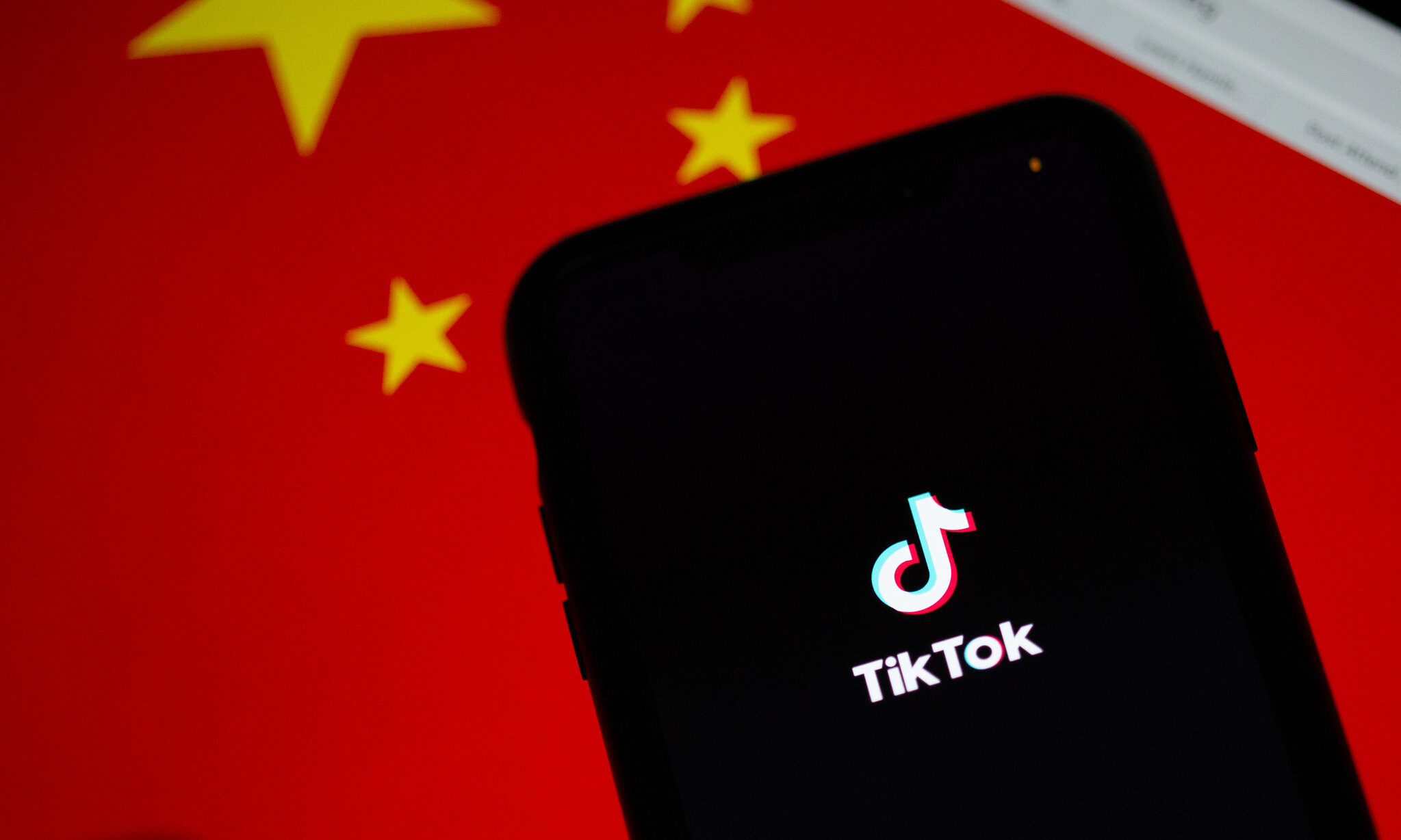
In recent months, Chinese media sponsored over a thousand ads on TikTok targeting European audiences. Additionally, accounts that carefully obscure their connections to China may pose further risks in coordinated information manipulation campaigns.
In July, TikTok launched an ad library showing ads targeting EU countries, the UK, and Switzerland. Along with other social networks, such as Facebook, LinkedIn, and Twitter, TikTok is on the list of platforms that will have to comply with new digital regulations drafted by the European Union. These include assessing the potential impacts of AI and algorithms on voting processes, (mental) health, violence, child safety, and strengthening overall transparency of platforms – from ad databases to the functioning of algorithms that recommend and select content for users.
The new library provides a behind-the-scenes look at TikTok ads, revealing who pays for them, who is their target, and how successful they are. According to a Forbes analysis, Chinese media targeted over 1,000 ads in European countries between October 2022 and the end of July. However, there could be even more ads, as the database allows searches based on advertisers rather than user profiles. Consequently, if Chinese media profiles are operating under the names of some random companies, it is not easy to track them down in the database.
Attractive Platform for Advertising
Chinese media are certainly not the only ones investing in TikTok advertising – in the whole context, these ads represent a mere fraction of the more than 27 million ads that circulated on TikTok during this period.
Both small and large companies invest in TikTok advertising, including Booking.com, Amazon, Samsung, Qatar Airways, Toyota, and Hugo Boss. While the success of ads is relatively unpredictable, TikTok is currently the cheapest platform in terms of price/impression ratio. There are more than 150 million users based in the European Union, Iceland, Norway, the United Kingdom and Switzerland. Users currently spend about 95 minutes a day on average on TikTok, which is by far the highest amount of time compared to other social media. The ads with the largest reach usually promoted various computer and mobile games, mostly from Chinese manufacturers, and offers from large companies mentioned above.
Compared to the most successful ads which reached up to 20 million unique users, sponsored videos from Chinese media had much lower reach, as they mostly fell into the 1-1,000 views category, with only a few in the 1,000-10,000 range. Because of such a wide reporting scale, it is difficult to estimate their actual reach. However, they could have appeared on the ‘For You’ pages of up to millions of users across Europe.
Traditional Dance and Pandas
TikTok notes that it does not allow political or election advertisements and therefore such ads are not part of the database. Although the ads paid by the Chinese state media lack political overtones, they clearly fit into China’s propaganda strategies and goals.
The sponsored videos followed the usual efforts to spread “positive energy” about China, depicting the country’s natural beauty, technological and economic achievements, tourist sites and culture. Some of the videos showed Xinjiang, where the Chinese government systematically oppresses (not only) the Uyghur population. However, even in this case, the videos showed traditional dances, nature and diligent students at school, carefully avoiding reactions to international criticism of human rights violations.
Sponsored content has been published by the Chinese state media Global Times, People’s Daily and CGTN. For instance, People’s Daily focused on the United Kingdom, paying for over 700 ads. Global Times sponsored 87 ads, which usually targeted multiple, especially Western European countries. Further hundreds of ads were purchased by sponsors registered as China News International Cultural Media based in Beijing and China Global Radio and Television, who paid for content not only published by Chinese media but also by TikTokers lacking direct links to China.
Low Interest in Chinese Media Accounts
These ads may help increase the visibility of Chinese media accounts, which, despite TikTok being a China-based platform, struggle with low follower numbers. On Facebook, Chinese media far outperforms the best-known Western media, including the BBC and CNN. For example, CGTN’s main account is currently followed by around 120 million users, while BBC News has around 55 million and CNN 39 million followers.
Similarly high numbers can be found for other Chinese media on Facebook, including, for example, the Czech profile of China Radio International, which is followed by nearly one million users, which would represent 10 percent of the country’s population. A closer look suggests that at least some of the followers do not represent authentic accounts – identical comments posted by the same users appear under each post, often consisting only of emojis or pictures, and thus the interaction does not appear credible.
On TikTok, however, China’s state media lag behind the number of followers they manage to attract on Facebook and Twitter. CGTN has only 26,000 followers on TikTok, while the People’s Daily is the most followed Chinese media account, currently having over 2 million followers. BBC News and CNN profiles have very similar numbers.
Seemingly Independent Views
Arguably a greater risk than the state media, however, comes from the accounts that carefully hide their links to China and sometimes have a much greater reach. While Twitter (X) has removed the designation of accounts whose content is controlled by the state, TikTok began with the labeling in January 2023, assessing editorial independence of media, funding, and affiliation with the state. Nevertheless, TikTok is gradually expanding the methodology, and if flagged by media or analysts, it also labels accounts that do not fall into the media category.
For example, the account “Glamour China”, which shows the “glamorous side of China” through videos about traveling, is now flagged. This account is currently followed by nearly 2 million users, with content that seems very similar to government-affiliated channels. However, this account does not repost state media content and it is not clear who is actually behind it.
Another example is Jason Smith, who is followed by over a million users, and whose videos often reach tens to hundreds of thousands of views. In his videos, Jason occasionally mentions that he is a host of a podcast called “The Bridge”, focused on “building bridges between the East and the West” and seeking to “inspire listeners from the opposites of the world,” but he does not share further details about his background.
Meanwhile, the podcast falls directly under China Radio International, and individual episodes showcase Chinese successes, such as poverty eradication and the fight against climate change, but sometimes also point to US domestic problems, from food shortages to housing problems.
Blurred Links with China
Although Jason has been featured in Chinese state media and some of the videos he has appeared in have also been sponsored by Chinese entities, his account is not labeled as affiliated with the Chinese government. These seemingly independent profiles present China’s official positions as their own, which obscures their origins and may enhance their credibility.
In addition, other TikTok accounts clearly present a Chinese perspective, but their links to China may not be confirmed using open sources. Some of them may receive funding, while others may only patriotically (and voluntarily) defend China’s policies. Compared to China’s state media, which mostly sticks to culture, nature, travel, recipes and the like, these accounts may come up with more controversial content.
While Chinese state media primarily portray tourist sites and culture in the Xinjiang region, for example, a TikTok account managed by a young man Alim, who calls himself a ‘Chinese Uyghur’ on Twitter, goes to great lengths to explain that China has successfully eradicated extremism, nothing bad is happening in the region and the buildings in the satellite images are not detention centers but random buildings or treatment centers for drug addiction. In the case of this account, it is impossible to determine whether it is defending Chinese politics and human rights abuses due to personal motivations or directly collaborating with the Chinese media. In any case, it contributes to the downplaying of the situation in the region.
Such accounts may escape the attention not only of TikTok, but also of the journalists and analysts who monitor the platform’s functioning. Moreover, users lacking knowledge of Chinese propaganda strategies may find it difficult to distinguish that the content presents the official stances of the Chinese Communist Party.
The involvement of influencers and amplification of the messaging through ads are strategies that have been identified on other platforms. However, as TikTok’s content is highly determined by the recommendation algorithms, rather than connections to other users, the content has a higher potential of becoming popular. In addition, the current preference for videos combined with the continuous rise of users, makes it attractive for a wide range of users, despite warnings issued by many governments and cybersecurity institutions.
Written by
Veronika Blablová
Veronika Blablová is an analyst at CEIAS.


